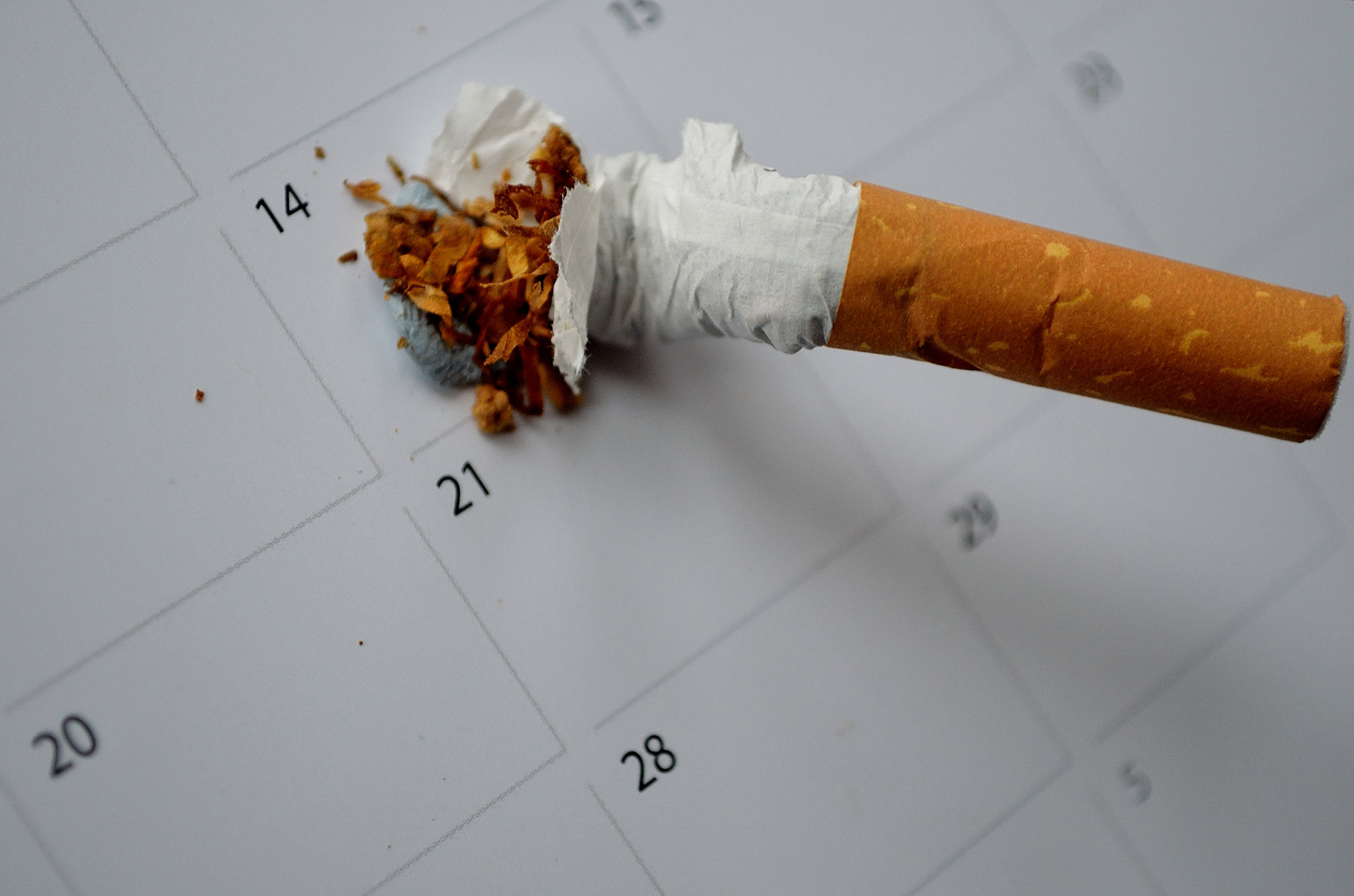
Smoking is responsible
for several diseases, such as cancer, long-term ( chronic ) respiratory
diseases, heart disease, diabetes, as well as premature death. Smoking is the
largest cause of preventable death in the world. Recent studies have found that
smokers can undermine the health of non-smokers in some environments.
Scientists say there are over 4,000 compounds
in cigarette smoke. A sizeable number of them are toxic - they are bad for us
and damage our cells. Some of them cause cancer - they are carcinogenic.
Tobacco
smoke consists mainly of :
Nicotine
- this is not carcinogenic. However, it is highly addictive. Smokers find it
very hard to quit because they are hooked on the nicotine. Nicotine is an
extremely fast-acting drug. It reaches the brain within 15 seconds of being
inhaled. If cigarettes and other tobacco products had no nicotine, the number
of people who smoke every day would drop drastically. Without nicotine, the
tobacco industry would collapse.
Carbon
Monoxide - this is a poisonous gas. It has no smell or
taste. The body finds it hard to differentiate carbon monoxide from oxygen and
absorbs it into the bloodstream. Faulty boilers emit dangerous carbon monoxide,
as do car exhausts.
Tar
- consists of several cancer-causing chemicals. When a smoker inhales cigarette
smoke, 70% of the tar remains in the lungs.

The chemicals in tobacco smoke harm your
blood cells. They also can damage the function of your heart and the structure
and function of your blood vessels. This damage increases your risk of atherosclerosis.
Atherosclerosis is a disease in which a
waxy substance called plaque builds up in the arteries. Over time, plaque
hardens and narrows your arteries. This limits the flow of oxygen-rich blood to
your organs and other parts of your body.
Coronary heart disease ( CHD ) occurs if
plaque builds up in the coronary ( heart ) arteries. Over time, CHD can lead to
chest pain, heart attack, heart failure, arrhythmias, or even death. Smoking is
a major risk factor for heart disease. When combined with other risk
factors—such as unhealthy blood cholesterol levels, high blood pressure, and
overweight or obesity—smoking further raises the risk of heart disease.
Smoking also is a major risk factor for
peripheral arterial disease ( P.A.D. ). P.A.D. is a condition in which plaque
builds up in the arteries that carry blood to the head, organs, and limbs.
People who have P.A.D. are at increased risk for heart disease, heart attack,
and stroke.
Secondhand smoke also can harm the heart and
blood vessels. Secondhand smoke is the smoke that comes from the burning end of
a cigarette, cigar, or pipe. Secondhand smoke also refers to smoke that's
breathed out by a person who is smoking. Secondhand smoke contains many of the
same harmful chemicals that people inhale when they smoke. Secondhand smoke can
damage the hearts and blood vessels of people who don't smoke in the same way
that active smoking harms people who do smoke. Secondhand smoke greatly
increases adults' risk of heart attack and death.
Secondhand smoke also
raises children and teens' risk of future CHD because it,
1.
Lowers HDL ( High Density Lipoprotein )
cholesterol ( sometimes called " good " cholesterol )
2.
Raises blood pressure
3.
Damages heart tissues
4. The risks of secondhand smoke are
especially high for premature babies who have respiratory distress syndrome (
RDS ) and children who have conditions such as asthma.
Smokers appeared to have a 44 % higher risk
of developing type 2 diabetes than non-smokers. The risk was highly linked to
the smoking degree. Heavy smokers ( at least 20 cigarettes daily ) had a 61 %
higher risk, while less than 20 cigarettes daily were correlated to a 29 %
increase of the risk. Former smokers had just a 23 % higher risk. The
researchers warn that this was not a proof of direct causality.
A number of studies have examined the
association between smoking and incidence of glucose abnormalities. The
findings of the study reveal that smoking could be independently associated
with glucose intolerance, impaired fasting glucose and type 2 diabetes. Hence,
smoking can lead to the development of type 2 diabetes.
Smoking causes diabetes because it leads to
insulin resistance or inadequate compensatory insulin secretion responses. So
there is a 50% likelihood of increased risk for diabetes among smokers ( both
men and women ).
Smoking which causes type 2 diabetes can
affect the other way round, too. Diabetics who smoke are at more risk of
aggravating their health problems. Following are the health risks that get
compounded due to smoking among the diabetics :
Blood glucose : Blood
glucose shoots up further among diabetics when they smoke.
Blood pressure : Blood
pressure elevates when a person suffering from diabetes smokes.
Cholesterol : The
cholesterol level increases among diabetic patients who smoke.
Infections : Smoking
damages the blood vessels of the diabetics which makes harder for their body to
heal. So, the risk of getting infected increases which can finally end up in
amputations.
Kidney and nerve
disease : Diabetics who already suffer from kidney and nerve disease can damage
the same when they smoke.
Joint mobility :
Diabetics, who experience problems in the mobility of their joints, are at
higher risk of losing joint mobility due to smoking.
Cancer : Diabetics who
smoke are prone to develop life-threatening cancers in mouth, throat, lung and
bladder.
Erectile dysfunction :
People who have diabetes and smoke have greater risk of being impotent.
Respiratory diseases :
Diabetics who smoke face difficulty in fighting against cold and other
respiratory diseases.
No comments:
Post a Comment